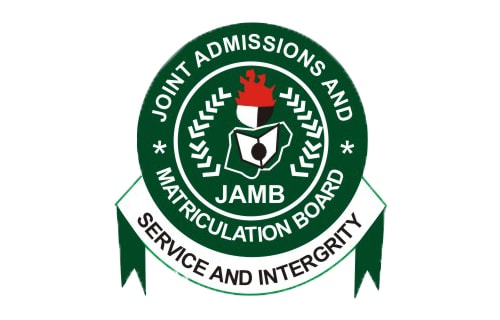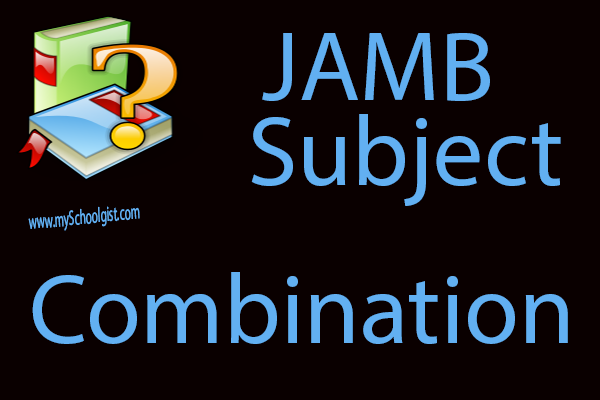
The current official Agricultural Science JAMB Syllabus for UTME candidates is now available. The JAMB syllabus contains all the topics UTME candidates writing the JAMB CBT exam are expected to cover before the examination to ensure they are adequately prepared for the examination.
If you have been looking to get the JAMB Syllabus online, look no further. We understand that JAMB usually provide this syllabus for candidates in a CD. However, we have discovered that many candidates are unable to access to access this due to one reason or the other.
We have therefore decided to make it easier for you by making it available online so you can view it using any device that can access internet including your mobile phones.
Here we have provided you the detailed, complete and current JAMB Syllabus for Agricultural Science. To view the JAMB Syllabus for all subjects, go to: Official JAMB Syllabus For All Subjects
Current JAMB Syllabus – Agriculture
The aim of this 2016/2017 Unified Tertiary Matriculation Examination syllabus in Agriculture is to prepare the candidates for the Board’s examination. It is designed to test their achievement of the course objectives, which are to:
1. stimulate and sustain their interest in Agriculture;
2. acquire basic knowledge and practical skills in Agriculture;
3. acquire the knowledge of interpretation and the use of data;
4. stimulate their ability to make deductions using the acquired knowledge in Agriculture
The syllabus is divided into five sections as given below:
A. General Agriculture
B. Agronomy
C. Animal Production
D. Agricultural Economics and Extension
E. Agricultural Technology
Current JAMB Syllabus – Agriculture: DETAILED SYLLABUS/CONTENTS
SECTION A: General Agriculture
| TOPICS/CONTENTS/NOTES | OBJECTIVES |
1. Meaning and Scope of Agriculturea. Definition of Agriculture b. Branches of Agriculture c. Types of Agriculture i.e subsistence and commercial | Candidates should be able to: use the definition of Agriculture in modern terms as it relates to production, processing and marketing. |
2. Importance of Agriculturei. Provision of raw materials for agro-allied industries | Candidates should be able to: relate agro-allied industries to their respective raw materials |
3. Agricultural Ecologya. Ecological zones of West Africa b. Agricultural products of each ecological zone | Candidates should be able to: differentiate between the features of the ecological zones in West Africa. |
4. Geneticsa. First and second laws of Mendel | Candidates should be able to: apply the first and second laws of Mendel to |
5. Farm Inputse.g. planting materials, agrochemicals, e.t.c. | Candidates should be able to: classify different types of farm inputs and their uses. |
6. History of Agricultural Development in West Africaa. Agricultural systems e.g. shifting | Candidates should be able to: compare various agricultural systems. identify the problems and proffer solutions give reasons for the establishment of ADPs. evaluate the contributions of national agricultural programmes. |
7. Roles of Government and NGOs in Agricultural Developmenta. Development of fiscal policies favourable to agricultural production e.g. import duties, ban on importation, e.t.c. c. Government programmes aimed at agricultural development e.g. subsidies, credit facilities, e.t.c. d. Provision of infrastructures e.g. transport systems, communication systems, e.t.c. e. Contribution of NGOs to agricultural development | Candidates should be able to: evaluate the effects of government policies on agricultural development. identify agricultural laws and their effect on agricultural production compare the various infrastructural facilities provided by government and their uses. examine the roles of NGOs in the development of agriculture. |
SECTION B: Agronomy
| TOPICS/CONTENTS/NOTES | OBJECTIVES |
1. Rocks and Soil formationa. Factors affecting rock weathering and soil formation b. Physical properties of soil c. Chemical properties of soil | Candidates should be able to: identify major types and properties of rocks and soils; factors and processes of soil formation. differentiate between the horizons in a soil profile. determine the soil pH. |
2. Soil Water and Soil Conservationa. Soil water: its importance, sources, movement, management and conservation. b. Soil conservation: meaning and importance, causes, effects, prevention and control of leaching, erosion, continuous cropping, burning and oxidation of organic matter. c. Irrigation and drainage methods | Candidates should be able to: i. compare capillary, gravitational and hygroscopic water. i. classify irrigation and drainage systems. |
3. Soil Fertilitya. Macro and micro-nutrients and their roles in plant nutrition: carbon, water and nitrogen cycles b. The living population of the soil (flora and fauna), and their roles in soil fertility c. Maintenance of soil fertility d. Nutrient deficiency symptoms e.g. chlorosis, sickle leaves, stunting, apical necrosis e.t.c. | Candidates should be able to: i. classify plant nutrients. examine the roles of soil flora and fauna in maintaining soil fertility. i. compare the different methods of maintaining i. identify the deficiency symptoms and their causes. |
4. Land Preparation and Soil Tillagea. Principles and practices of land preparation and soil tillage b. Factors affecting choice of tillage methods: Zero tillage, minimum tillage, e.t.c. | Candidates should be able to: i. compare the different methods of land preparation and soil tillage in relation to different groups of crops. |
5. Plant Forms and functionsa. Parts of monocot and dicot crop plants and their functions b. The anatomy and morphology of the storage organs of common crop plants | Candidates should be able to: i. identify crop plant parts and their functions. |
6. Growth, Development and Reproductiona. Gametogenesis | Candidates should be able to: examine the process of gamete formation. |
7. Plant Propagation Methodsa. Sexual: the use of seeds, seed viability, viability test, seed rate and seed germination b. Asexual (vegetative propagation) e.g. cutting, budding, grafting, layering, e.t.c. c. Nursery and nursery management | Candidates should be able to: i. classify crops propagated by sexual methods. |
8. Cropping Systems, Planting Patterns and Plant Densitiesa. Cropping systems: Monocropping, mixed-, multiple-, inter-, relay-, strip- and rotational cropping c. Plant densities: single, double and multiple stands | Candidates should be able to: i. compare cropping systems. differentiate between the various planting patterns. i. examine the various types of plant densities and their effects on crop yield. |
9. Crop HusbandryCommon and scientific names, gross morphology, anatomy of storage organs, methods of propagation, husbandry practices, harvesting, processing and storage, common diseases and pests, economic importance of the following groups of crops. | Candidates should be able to: i. apply the different methods of crop propagation, husbandry, harvesting, processing and storage for each crop. |
10. Pasture and Forage Cropsa. Study of gross morphology, methods of propagation and husbandry of common pasture grasses and legumes. Establishment, maintenance, conservation and uses of pastures and forage crops. | Candidates should be able to: i. classify common grasses and legumes used as pastures and forage |
11. FloricultureIdentification, establishment, maintenance and uses of ornamental trees, shrubs and flowers | Candidates should be able to: i. distinguish between common ornamental trees, shrubs and flowers. |
12. Weedsa. Gross morphology, methods of reproduction, dispersal and effect of weeds | Candidates should be able to: i. identify weeds with their common and scientific names. |
13. Crop Diseasesa. Identification of disease-causing organisms both in store and in the field. | Candidates should be able to: distinguish between common store and field disease – causing organisms. |
14. Crop pestsa. General account of pests of agricultural plants both in the field and in the store, their types, importance, principles and methods of prevention and control | Candidates should be able to: i. identify the various field and store pests. |
15. Forest management (Silviculture)a. Importance: Source of wood, pulp, fibre and other forest products | Candidates should be able to: relate various forest products to their uses. |
16. Crop improvementMethods of crop improvement e.g. introduction, selection, crossing, quarantine e.t.c. | Candidates should be able to: i. give reasons for crop improvement. |
SECTION C: Animal Production
| TOPICS/CONTENTS/NOTES | OBJECTIVES |
1. Forms and classification of major farm animals in West Africaa. Species, breeds and distribution b. External features of cattle, sheep, goat, pigs, rabbits and poultry | Candidates should be able to: i. classify various breeds of farm animals. identify their characteristic features. |
2. General terminology in animal productionCommon terms used in animal husbandry, e.g. calving, kidding, castrate, capon, veal, mutton, e.t.c. | Candidates should be able to: use various terms in animal husbandry. |
3. Anatomy and physiology of farm animalsa. Functions of tissues and organs of farm animals b. Animal body systems e.g. digestive (ruminants and non-ruminants), reproductive, respiratory, urinary (excretory) and nervous systems. | Candidates should be able to: distinguish between various functions of tissues and organs of farm animals. determine the effects of climate change on farm animals |
4. Reproduction in farm animalsa. Gametogenesis, oestrus cycle, signs of heat and heat periods, secondary sexual characters, gestation periods, parturition and the role of hormones in reproduction. b. Development, nourishment and birth of the young. Mammary glands and lactation in farm animals. | Candidates should be able to: i. give an account of the process of reproduction in farm animals. trace the development in farm animals from fertilization to birth and care of the young. trace the process of egg formation and incubation in poultry. |
5. Animal nutritiona. Feed nutrients and functions b. Feeds and feeding: Simple ration formulation – balanced ration, common pasture/forage crops e.g. guinea grass, elephant grass, giant star grass. Andropogon sp, Calopogonium sp. Hay and silage preparation, different types of rations, namely maintenance ration and production ration. c. Nutrient deficiencies: Causes and symptoms of malnutrition and their correction in farm animals. | Candidates should be able to: identify the various feed nutrients, their sources and functions. i. trace symptoms to nutrient deficiencies in farm animals. |
6. Livestock managementHousing, feeding, sanitation and veterinary care of ruminants, pigs, rabbits and poultry under intensive, semi-intensive and extensive systems of management from birth to slaughter. | Candidates should be able to: apply the different management practices for farm animals. |
7. Animal Healtha. Animal diseases (pathology) b. Parasites (parasitology) ii. Prevention and control | Candidates should be able to: i. identify diseases of farm animals and apply appropriate prevention and control methods against livestock parasites. |
8. Fisheries and Wildlifea. Fish culture systems; Common types of fishes e. g Tilapia, Catfish, etc. b. Fish harvesting and processing methods iii. Fishery regulations c. Wildlife management | Candidates should be able to: i. identify the common types of fishes in West Africa. i. assess the advantages and disadvantages of different fish harvesting and processing methods. i. identify animals found in West African game reserves. |
9. Bee-keeping (Apiculture)a. Meaning and importance of apiculture | Candidates should be able to: relate bee-keeping to economic development |
10. Animal ImprovementMethods of animals improvement e. g. introduction, breeding, quarantine and selection: Breeding systems – inbreeding, line-breeding, cross-breeding, artificial insemination | Candidates should be able to: i. give reasons for animal improvement. |
SECTION D: Agriculture Economics and Extension
| TOPICS/CONTENTS/NOTES | OBJECTIVES |
1. Factors of agricultural productiona. Land b. Labour c. Capital d. Management | Candidates should be able to: i. understand the meaning of land and state its uses ii. identify the various forms of land ownership. iii. examine their effects of land ownership on agriculture. iv. differentiate between the various features of land and their effects on land use.differentiate between the types and sources of labour and their effects on agricultural production. compare the sources of capital and associated problems. determine the function of a farm manager in an agricultural enterprise. |
2. Basic Economic Principlesa. Demand and supply b. Production function: | Candidates should be able to: i. relate demand to supply in agricultural production. |
3. Characteristic Features of Agricultural ProductionSmallness of farm holdings: biological limits of farm production and susceptibility of farm production to climate, seasonality of farm productions, price elasticity in demand and supply of agricultural produce. | Candidates should be able to: i. distinguish between the common features of agricultural production and produce. |
4. Labour Managementa. Labour relations: Supervision, etc. b. Types of labour: Permanent labour etc. c. National labour laws and regulations | Candidates should be able to: identify the various ways of achieving labour efficiency. |
5. Farm Managementa. Qualities, functions and problems of farm b. Records and record-keeping: Types and importance of record-keeping – livestock records, profit and loss account book. c. Stock evaluation: d. Agricultural insurance: | Candidates should be able to: identify the qualities, functions and problems of a i. differentiate between the types of farm records. determine gross and net margins, appreciation, depreciation and salvage value i. examine the relevance of agricultural insurance |
6. Marketing of Agricultural Producea. Importance of Marketing. c. Characteristic features of agricultural product affecting their marketing | Candidates should be able to: evaluate the importance of agricultural marketing |
7. Agricultural Extensiona. Meaning and importance. c. Extension methods including demonstration plots, use of visual aids, mass media, etc. d. Problems of agricultural extension in West Africa and possible solutions. | Candidates should be able to: identify the importance of agricultural extension. differentiate between the various extension methods. i. examine the problems of agricultural extension in West Africa. |
SECTION E: Agricultural Technology
| TOPICS/CONTENTS/NOTES | OBJECTIVES |
1. Farm surveying and farmstead planninga. Meaning and importance | Candidates should be able to: examine the relevance of farm surveying to agriculture. |
2. Simple farm tools | Candidates should be able to: i. identify simple farm tools. |
3. Farm machinery and implementsa. Types | Candidates should be able to: identify common farm machinery and implements. |
4. Mechanization and sources of farm powera. Sources of farm power e. g. animal and machines | Candidates should be able to: compare the advantages and disadvantages of various sources of farm power and their application. |
5. Processing and storagea. Processing: traditional and modern methods of food processing e.g. gari, rice and groundnut processing, etc. b. Storage | Candidates should be able to: i. identify the importance of agricultural processing. |
6. Introduction to biotechnologyBasic terms, e.g. tissue and anther culture in vitro fertilization and genetic engineering | Candidates should be able to: i. use basic terms in biotechnology. |
7. Application of ICT in agriculturea. Features of computers | Candidates should be able to: identify the various components of a computer. |
8. Introduction to agricultural research and statisticsa. Basic concepts in planning agricultural experiments e.g hypothesis, treatment and control, etc | Candidates should be able to: use basic concepts in agricultural experiments.i. draw inferences from experimental results. ii. compute simple measures of central tendency. |
Current JAMB Syllabus – Agriculture: RECOMMENDED TEXT BOOKS
Adeniyi, M. O. et al (1999) Countdown to Senior Secondary Certificate Examination Agricultural Science, Ibadan: Evans
Akinsanmi, A. O. (2000) Junior Secondary Agricultural Science, Uk: Longman.
Akinsanmi, O. A. (2000) Senior Secondary Agricultural Science, Uk: Longman.
Anthonio, Q. B. O. (1999) General Agriculture for West Africa, London: George Allen
Are, L. A. et al (2010) Comprehensive Certificate Agricultural Science for Senior Secondary School, University Press Plc.
Egbuna, C. K. et al (2014) Extension Modern Agricultural Science for Senior Secondary Schools (2010), Extension Publication
Emmanuel C. A. (2003) A Dictionary of Agriculture, Benue: Agitab Publisher Makurdi
Falusi, A. O. and Adeleye, I. O. A (2000) Agricultural Science for Junior Secondary Schools Books 1- 3, Ibadan: Onibonoje
Komolafe, M. F., Adegbola, A. A., Are, L. A. and Ashaye, T. I. (2004) Agricultural Science for Senior Secondary Schools 1, 2 and 3, Ibadan: University Press Ltd.
Philips T. A. (1986) Agricultural Notebook, Lagos: Longman
STAN (1999) Agricultural Science for Senior Secondary Schools, Lagos: Longman




